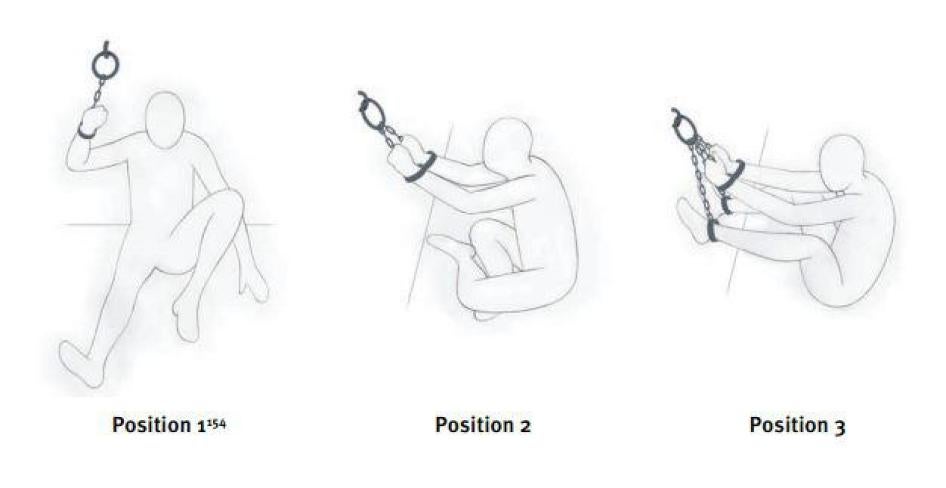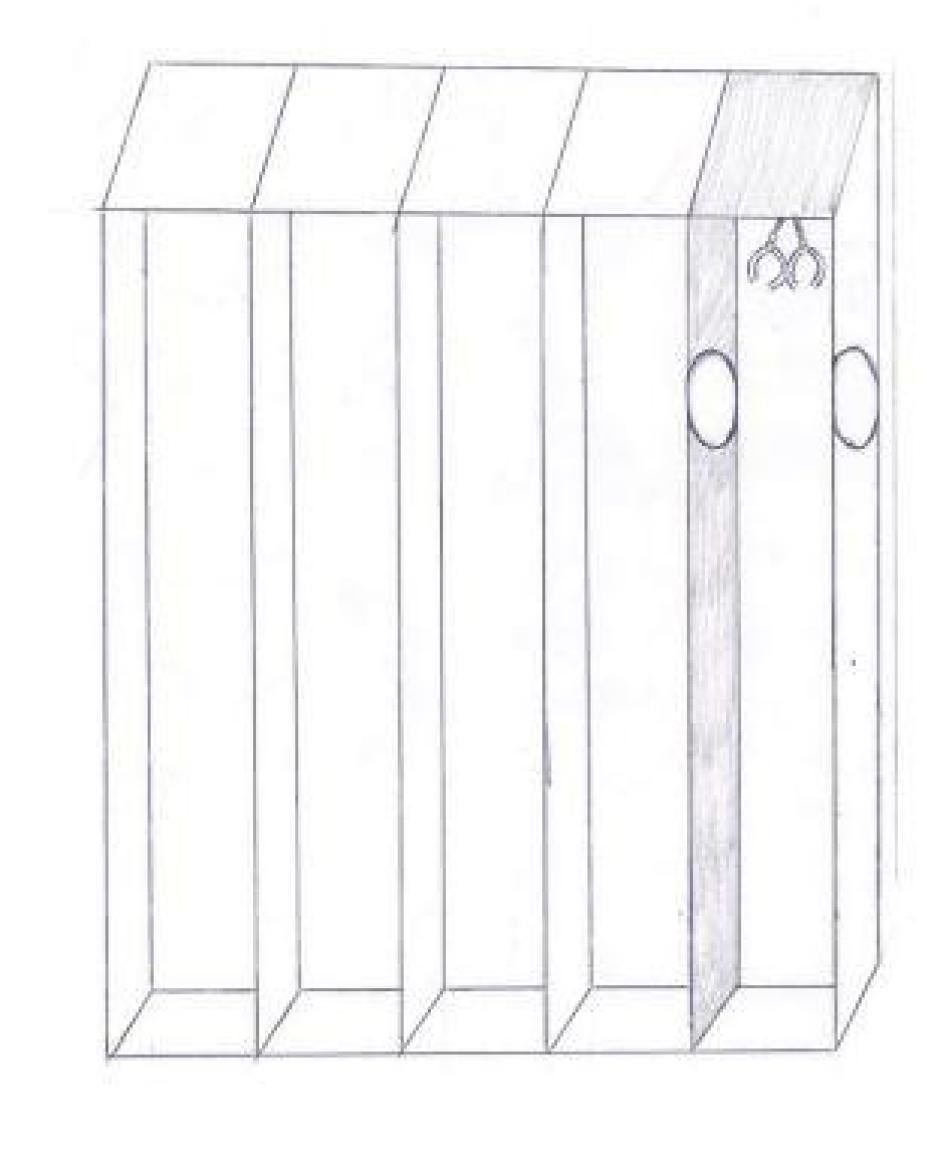It is now widely acknowledged that after the 9/11 attacks in the US, the Central Intelligence Agency (CIA) began a global detention and interrogation program through which it tortured and abused prisoners. Yet the US government has failed to hold accountable both those who designed and authorized the program and the agents who directly carried out the abuses. Laura Pitter, senior US national security counsel at Human Rights Watch, interviewed many former detainees who were tortured by the CIA. She talks to Stephanie Hancock about what they went through and why it’s important they get justice.
This is a long and complex story. What did you find?
In the years after 9/11, the US basically abducted or were handed scores of men throughout the world, held them in secret locations, and tortured or otherwise mistreated them. Yet there’s been zero accountability for these crimes.
You spent a lot of time interviewing victims of CIA torture. What shocked you the most?
What gets under my skin is speaking to people who were tortured, and knowing that the US government did this to them. Hearing people describe the depravity of the conditions they were held in, seeing them draw instruments of torture, hearing how they were kept in diapers, hung from ceilings, nearly suffocated, dunked in ice water. It was a total lack of humanity, and, as an American, knowing that the US was involved in that is very hard.
What kinds of torture and ill-treatment did they suffer?
They were held in pitch dark, windowless cells for months on end. They were deprived of sleep and forced to stand for days at a time – if their legs buckled, they were forced to hang by their arms instead. At least one detainee was forced to stay awake for seven days in a row. They were slammed into walls – a practice called “walling” – and put in painful stress positions for days. Several were subjected to water boarding, which dates back to the days of the Spanish Inquisition, and something the CIA called “water dousing” – which often involved forcing detainees into ice cold water, and pouring water over their face until they couldn’t breathe. Many were put in diapers, or held naked and forced to defecate on themselves. One was forced to stand upright with his hands handcuffed above his head, in a narrow box with loudspeakers right next to each ear that played loud, screaming music at him for one full day and a half. He had a broken leg at the time but was made to stand on it anyway. All of them were endlessly interrogated.
How did torture like this ever get authorized?
In the days following the 9/11 attacks in the US, the CIA wanted to use 10 so-called “enhanced interrogation” techniques on detainees, including water boarding, painful stress positions and days of sleep deprivation. But it had a problem: these practices are torture – the US Army field manual even banned many of the techniques – and torture is a crime under both US and international law.
The CIA asked the criminal division of Department of Justice for a guarantee that anyone using these techniques would be immune from prosecution, but the request was rejected.
So the CIA and senior White House officials went to a small team of Justice Department lawyers located within the White House – the Office of Legal Counsel. They said yes, and eventually wrote memos, later roundly discredited, stating that the techniques did not constitute torture.
That’s how this government-sanctioned program of torture came about.
But isn’t torture illegal under US law?
Yes. A 1994 federal statute, enacted when the US ratified the United Nations Convention against Torture, makes the use of torture a criminal offense. But the memo re-defined torture very narrowly only as a practice that causes pain similar to that of “organ failure, impairment of bodily function, or death.” So under that definition, an interrogator who, for example, broke the detainee’s bones or nearly drowned them, would not be deemed to have committed “torture” because it would not result in organ failure or death. The CIA used this completely twisted definition of torture to approve the specific techniques.
How many people were tortured by the CIA?
The CIA maintains that its practices did not amount to torture but the public record clearly refutes this. The Senate Intelligence Committee put out a 500 page summary of a much larger, still classified 6,700 page report in December last year. That Senate report summary says that the CIA detained at least 119 people under its program, but also that this is a very conservative estimate. It also makes clear that this number does not include detainees who were “rendered” [transferred] to other countries by the US, many of whom were then tortured. The full number is something the US public deserves to know and the US government has a legal obligation to provide.
Do you think any detainees in the CIA program were guilty?
Those apprehended who committed crimes should be properly tried by federal courts. But the CIA program was never about guilt or innocence, it was about getting information from people whom the CIA thought had intelligence about terrorist attacks. The CIA was supposed to only detain those they believed posed an imminent threat to the US or were planning specific attacks, but in reality they rounded up a lot of people without basis and tortured them to find out if they knew anything. The CIA has no real history and experience of interrogations, though, and no idea how to do them in an effective and lawful manner. A lot of the information they got was false or insignificant.
What kind of misleading information did the abusive interrogations obtain?
There’s the case of Khalid Sheikh Mohamed, who is accused of masterminding the 9/11 attacks. After many rounds of waterboarding and other forms of torture, he told interrogators that some African Americans in Montana were planning something big. This was completely false – something he said just to get his torture to stop. The CIA admits this. Then there was Sheikh Ibn Al-Libi, who, after rounds of torture, provided false information connecting Iraqi leader Saddam Hussein to Al-Qaeda. He recanted it later but nevertheless, Secretary of State Colin Powell used this information when he delivered his UN Security Council speech seeking its approval to go to war against Iraq. Powell has since said he regrets using this information.
Doesn’t torture provide useful information?
Professional interrogators say that interrogations are much more effective without the use of torture. Torture pushes detainees to provide wrong or misleading information or to resist in ways they may not have before just to get the torture to stop. Under such circumstances, sorting out the accurate from the false information becomes difficult. The FBI refused to participate in the CIA program because torture was ineffective as well as unlawful.
Even if unlawful, wasn’t the CIA program effective in preventing terrorist attacks on US soil?
The Senate report summary shows that the CIA did not get actionable intelligence on serious terrorist threats from its entire program. The CIA tried to suggest it produced more than a morsel or two of useful information, but the program did not lead to Osama Bin Laden, and it did not stop the “shoe bomber” plot or anything else. Claims the CIA made about the efficacy of the intelligence it gathered were false or exaggerated.
The US Justice Department says it’s investigated alleged torture. Has it?
The US has yet to conduct a credible investigation into the allegations of CIA torture. It opened one investigation in 2009. But this investigation was flawed from the start because it only looked into abuses beyond those purportedly authorized when authorization of the program itself should have been the main focus. Prosecutors looked into 101 case of abuse but closed 99 of them in 2011 and the final two in 2012 without bringing any charges. In addition, it appears that the Justice Department never interviewed any detainees from the CIA program for this investigation. In any credible criminal investigation, the first thing you do is interview alleged victims of the crime.
But didn’t President Obama shut down the program?
He did. He ended it his first full day in office. But only because the Senate Intelligence Committee conducted an in-depth investigation that took more than six years do we know as much as we do about the program. But the committee’s full report still needs to be made public. And those responsible need to be brought to justice. Holding the CIA and senior White House officials to account won’t be easy, but our legal research found that obstacles to prosecution can be overcome.
Why is it important to hold senior officials to account?
No one should be above the law. These were serious crimes and the victims deserve justice. But unless President Obama makes it clear that these criminal acts deserve punishment, there is a danger that torture will be treated as a policy option by a future US administration. This is the wrong message for the American people and a terrible message to send to other countries. And failure to take action could poison Obama’s legacy – he will be remembered as the president who refused to treat torture like the crime it is.
You met a lot of victims during your research. Whose story particularly touched you?
What really got me was meeting a man who was held in CIA custody for 16 months. We spent hours piecing together his experience. I couldn’t work out how he was so certain of all the dates during his captivity, because he was held in pitch darkness much of the time, so I asked him about it. He told me that one day he was taken outside for an hour of sun, and while outside in the light, he saw that the guard’s watch said “September 5, 2003.” He remembered that.
Back inside, another inmate had a bird’s nest near his cell, and could hear the birds singing each morning. Even though there was loud music blaring through the entire facility 24 hours a day, the inmate was able to shout over the noise to the others that the birds were singing - signaling the start of a new day. This is how he was able to count the days. I commented about the remarkable ability of human beings to adapt. Moments later he put his head down, and I saw he had begun to cry. We had talked for hours before that about his abuse, but it was my recognition of his humanity that finally got to him. I will never forget that moment. It is one of the things that drives me.
What effect has this had on you personally?
As an American myself, it’s very hard to know my government did this to people – they were in our custody and under our care. There is something so insidious about inflicting pain on people consciously. I have a lot of compassion for the victims and I think they understood I was going to work for justice for them. They told me that was a very powerful medicine for them.
This interview has been edited and condensed.









